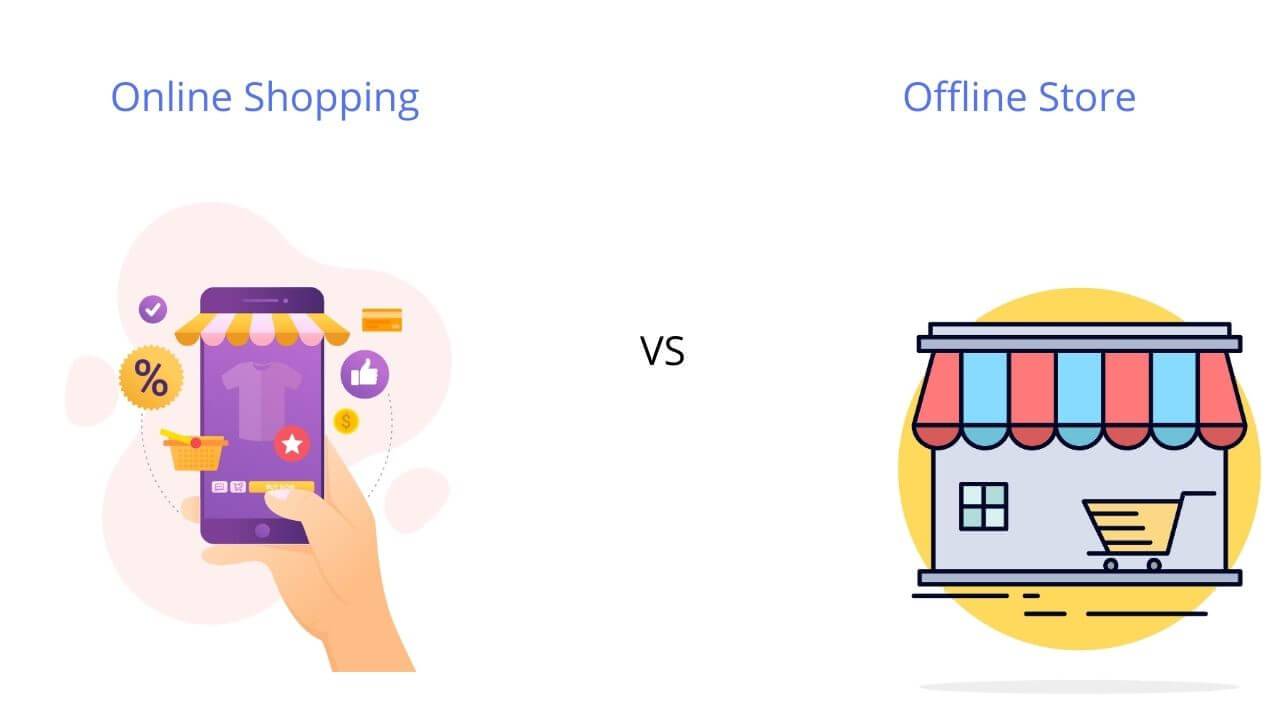Pros of Online Shopping
- Convenience Online shopping is incredibly convenient, allowing you to shop from the comfort of your home at any time, day or night. There’s no need to drive to a store, find parking, or wait in long lines. This is especially beneficial for those with busy schedules, mobility issues, or those who live far from retail centers.
- Variety and Selection Online stores offer a vast range of products, often far exceeding what is available in local stores. You can find items from all over the world, compare different brands easily, and access niche products that may not be available locally. This broad selection makes it easier to find exactly what you’re looking for.
- Better Prices E-commerce platforms frequently offer competitive prices and better deals compared to brick-and-mortar stores. Online retailers can offer lower prices because they don’t have the same overhead costs as physical stores. Additionally, you can take advantage of online-only sales, discounts, and use coupon codes to save money.
- Customer Reviews and Ratings One of the significant advantages of online shopping is the ability to read customer reviews and ratings. These insights from other buyers can help you make informed decisions, avoid low-quality products, and find items that truly meet your needs and expectations.
- No Crowds Shopping online means you can avoid the hustle and bustle of crowded stores, especially during peak shopping times like weekends or holidays. This can make your shopping experience more relaxed and enjoyable, without the stress of navigating through crowds or waiting in long checkout lines.
Cons of Online Shopping
- Shipping Costs While many online retailers offer free shipping, others may charge additional fees, which can increase the overall cost of your purchase. This is especially true for international shipping or for heavy or bulky items. It’s important to factor in shipping costs when comparing prices between online and offline stores.
- Delivery Time One of the main drawbacks of online shopping is the wait time for delivery. Unlike shopping in a physical store where you get your items immediately, online purchases can take several days or even weeks to arrive. This can be inconvenient if you need the item urgently.
- Return and Exchange Hassles Returning or exchanging items bought online can be cumbersome. It often involves repackaging the item, printing return labels, and taking the package to a shipping facility. Additionally, there might be return shipping fees, and it can take time to process refunds or exchanges.
- Inability to Physically Inspect Products When shopping online, you cannot touch, feel, or try on products before purchasing. This can lead to disappointment if the item doesn’t meet your expectations in terms of quality, fit, or appearance. Detailed product descriptions and photos help, but they can’t replace a hands-on inspection.
- Security Concerns Online shopping requires sharing personal and financial information, such as your credit card details and address. This can be risky if the website is not secure. Cybersecurity threats, such as data breaches and identity theft, are real concerns, making it crucial to shop on trusted and secure websites.
Pros and Cons of Offline Shopping
Pros of Offline Shopping
- Immediate Gratification One of the biggest advantages of offline shopping is immediate gratification. You can see, touch, and try on products before buying them, and you get to take them home right away. This is particularly beneficial for items like clothing, shoes, and groceries, where physical inspection is important.
- Personal Shopping Experience Shopping in a physical store provides a tactile and sensory experience that online shopping cannot replicate. You can feel the texture of fabrics, see the true color of items, and test products such as electronics before making a purchase. Additionally, the ambiance of a store can enhance your shopping experience.
- Customer Service In-store shopping offers the opportunity to receive immediate assistance from sales staff. You can ask questions, get advice, and receive personalized recommendations. This face-to-face interaction can be invaluable, especially for complex or high-value purchases like electronics, appliances, and furniture.
- No Shipping Costs When you purchase items in a physical store, there are no additional shipping costs, which can save you money. This is particularly advantageous for bulky or heavy items that would incur high shipping fees if bought online.
- Supporting Local Businesses Shopping at local stores supports the community and contributes to the local economy. It helps sustain small businesses, which in turn creates jobs and fosters a sense of community. By shopping locally, you also reduce your carbon footprint associated with shipping.
Cons of Offline Shopping
- Limited Variety and Selection Physical stores are limited by their shelf space and may not carry as many products or brands as online retailers. This means you might not find exactly what you’re looking for and may need to visit multiple stores to find the right item.
- Time-Consuming Offline shopping can be time-consuming, requiring you to travel to the store, find parking, and navigate through aisles. During peak times, you may also have to wait in long lines at checkout. This can be particularly inconvenient if you have a busy schedule.
- Higher Prices Physical stores often have higher operating costs, such as rent, utilities, and staff salaries, which can result in higher prices compared to online retailers. Additionally, offline stores may not offer as many discounts or promotional deals as their online counterparts.
- Inconvenient Hours Brick-and-mortar stores have set hours of operation, which may not always be convenient for your schedule. If you work long hours or have other commitments, you might find it challenging to visit stores during their open hours.
- Crowded Stores Shopping in physical stores can be stressful and frustrating, especially during peak times, holidays, or sales events. Large crowds and long lines can make the shopping experience less enjoyable and more time-consuming.
In conclusion, both online and offline shopping have their unique advantages and disadvantages. Your choice will depend on your personal preferences, needs, and priorities at the time of purchase. Balancing the convenience of online shopping with the tangible experience of offline shopping can help you make the most of both worlds.
I am Komal Hatwaani, aims to provide readers with informative and engaging content that covers everything from technology and business to entertainment and lifestyle. This website dedicated to delivering high-quality content that informs, entertains, and inspires our readers.
Join us on our journey as we continue to explore the ever-evolving landscape of news and information, providing you with valuable insights and perspectives that enrich your digital experience.












